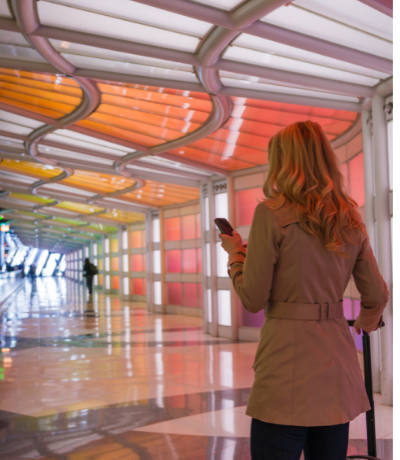Understanding Security Protocols for International Travel
Understanding current international travel security protocols can be tricky because they change all the time – without warning too!
19 November 2010
While air travel is convenient and comfortable, a few hurdles need to be jumped before jetting off to your destination, one of the biggest challenges is getting through airport security in a timely manner. All airline passengers undergo security checks at the airports, and those who are not well prepared may run into unnecessary trouble with security officers; this can lead to a traveler missing their flight or detainment for security purposes. It is essential for travelers to understand security protocol for international air travel.
Why the changes?
Many airports around the world have stepped up security measures to detect and counter terrorism; airline passengers have to undergo screening that is more extensive before they board their flights, because of this it will take longer for people to clear security checkpoints. Those who know what to expect at the checkpoints can usually get through security without much hassle. On the other hand, passengers who do not understand airport security protocol may bring things that are prohibited, and they may have to go through additional screening with security officers. Extra screening usually lasts for about ten minutes but this number fluctuates in each specific airport, and traveler situation.
What to do about it
To make sure that they will not be late for your flight, travelers should know what they need to do at both the check-in counter and the security checkpoint. Before leaving for the airport, travelers should call the airline to find out how much time they have to spend at the security checkpoint. If the security procedure takes a considerably long time, travelers should try to arrive at the airport much earlier; it is advised that travelers arrive a minimum of two hours before any scheduled flight. Travelers should also find out the maximum weight that is allowed for any carry-on luggage, so that they can avoid the hassle of having to repack luggage if it is indeed overweight. Travelers are only permitted to bring one personal bag, which may be briefcase or handbag, and one bag as carry-on baggage.
When at the check-in counter, travelers will be required to prove your identity with a photo ID or passport. The ID has to be issued by the United States government or the state. Certain non-photo IDs are also acceptable, but it is best that travelers bring a photo ID. If travelers have purchased their tickets online, they may be asked to show flight confirmation from the airline.
Avoid packing these items
To ensure that all passengers have a safe flight, the United States government has issued a list of items that are not permitted on airplanes. These include explosive materials such as: dynamite, blasting caps, flares, fireworks, plastic explosives, hand grenades, explosive replicas; flammable items such as: aerosol, fuels, lighter fluid, gasoline, gas torches, matches, flammable paints, turpentine, paint thinner, and others; and disabling chemical such as chlorine, fire extinguishers, liquid bleach, spillable batteries, spray paint, tear gas, and vehicle airbags. Items that you cannot bring in your carry-on bag, but can be placed in your checked luggage, include ice axes or picks, box cutters, meat cleavers, knives, sabers, swords, baseball bats, bows and arrows, spear guns, hockey sticks, ski poles, BB guns, firearms, ammunition, pellet guns, firearm replicas, crowbars, hammers, saws, and wrenches.
Security procedures
When travelers are at the airport security checkpoint, the security officers may ask them to remove their shoes. If they are carrying a cell phone or other electronic gadgets, they may need to take them out, so that the officers can x-ray them. Travelers also have to remove all the metal objects that they have on their body or in their pockets before walking through the metal detector. If the officers find that a traveler is carrying prohibited items, they may want them to go through additional screening; this may involve a full body search and a short interview.
Even if travelers understand the airport security protocol and they take the right measures to prevent unnecessary hassle at the airport, there is still a chance that they may be held up at the security checkpoints. To make sure that they do not suffer great financial loss if they miss their flight, they should purchase travel insurance before any trip. A travel insurance policy will protect travelers against losses that are incurred because of missed flights and other misfortunes that arise during a trip.
Related topics
Damian Tysdal is the founder of CoverTrip, and is a licensed agent for travel insurance (MA 1883287). He believes travel insurance should be easier to understand, and started the first travel insurance blog in 2006.
